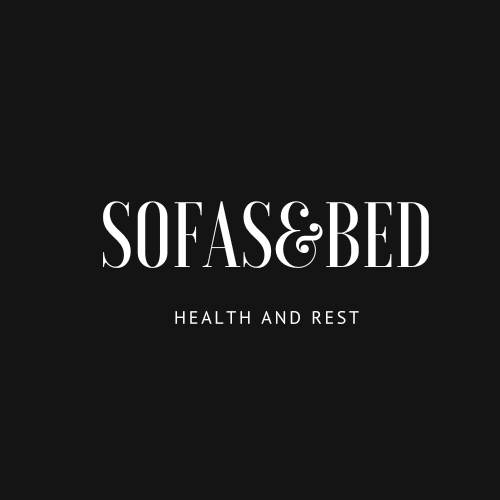Proven Techniques to Improve Sleep Quality
In our pursuit of better health and wellbeing, sleep quality often emerges as a critical yet challenging component. While many recognize the importance of adequate sleep duration, the quality of that sleep may actually be more important than the quantity. This article explores evidence-based techniques to improve sleep quality, drawing from cognitive behavioral therapy for insomnia (CBT-I), environmental optimization strategies, relaxation methods, and technological approaches.
Cognitive Behavioral Techniques for Better Sleep
Cognitive Behavioral Therapy for Insomnia (CBT-I) is considered the gold standard for improving sleep quality, with effectiveness rates exceeding those of sleep medications in long-term studies.
Stimulus Control Therapy
This technique aims to rebuild the association between your bed and sleep by limiting non-sleep activities in the bedroom and establishing specific protocols for sleep difficulties.
The 15-Minute Rule
If you can’t fall asleep within approximately 15 minutes, get up and engage in a relaxing activity in dim light until you feel sleepy, then return to bed—reinforcing the bed-sleep connection.
Bedroom Activity Limitations
Restricting bedroom activities to sleep and intimacy helps strengthen mental associations between your sleep environment and actual sleep, eliminating competing mental cues.
Sleep Restriction Therapy
This paradoxical approach involves temporarily reducing time in bed to build stronger sleep drive and consolidate fragmented sleep patterns.
Sleep Efficiency Calculation
Calculate your current sleep efficiency by dividing actual sleep time by time spent in bed and multiplying by 100. A healthy target is 85% or higher.
Gradual Time Adjustments
Once sleep efficiency improves above 90% for several consecutive nights, gradually increase allowed bed time in 15-minute increments until you reach your optimal sleep duration.
Cognitive Restructuring
This technique addresses dysfunctional beliefs and attitudes about sleep that contribute to sleep-related anxiety and poor sleep quality.
Catastrophic Thinking Identification
Learning to recognize and challenge catastrophic thoughts about sleeplessness (e.g., “I’ll be completely non-functional tomorrow”) reduces sleep-related anxiety that can perpetuate insomnia.
Realistic Expectation Setting
Understanding that occasional sleep difficulties are normal and that the body has compensatory mechanisms for short-term sleep loss helps reduce performance anxiety around sleep.
Environmental Optimization Strategies
Your sleep environment dramatically impacts sleep quality, often in ways that fly beneath conscious awareness but significantly affect sleep architecture.
Light Management Techniques
Light exposure is the primary regulator of circadian rhythm and significantly impacts both sleep onset and quality.
Blue Light Filtering Strategies
Beyond avoiding screens before bed, using blue light filtering glasses in the evening has been shown to increase melatonin production by up to 58% in some studies.
Strategic Morning Light Exposure
Getting 15-30 minutes of bright morning light exposure helps set your circadian rhythm for the day, making it easier to fall asleep at night and improving sleep quality.
Sound Environment Optimization
Acoustic disturbances can fragment sleep even when they don’t fully wake you, reducing time spent in restorative deep and REM sleep.
Pink Noise Benefits
Studies suggest that pink noise (a deeper variation of white noise) can increase deep sleep time and improve memory consolidation during sleep more effectively than white noise.
Sound Masking Strategy
Rather than attempting to block all sound (which can increase anxiety about missing important alerts), using consistent background sounds to mask unpredictable noises often proves more effective.
Temperature Regulation Methods
Body temperature regulation is intricately linked with sleep quality, with even small variations significantly impacting sleep architecture.
The Warm Bath Effect
Taking a warm bath or shower 1-2 hours before bed triggers a beneficial drop in core body temperature that facilitates sleep onset and improves slow-wave sleep.
Extremity Temperature Paradox
Research shows that warm hands and feet combined with a cool core temperature create ideal conditions for rapid sleep onset—wearing socks to bed can decrease sleep latency by up to 15 minutes.
Mind-Body Approaches to Sleep Enhancement
The mind-body connection plays a crucial role in sleep quality, with various relaxation techniques showing significant benefits for different types of sleep difficulties.
Progressive Muscle Relaxation
This systematic technique involves tensing and then releasing different muscle groups, reducing physical tension that can interfere with sleep onset and quality.
The 4-7-8 Breathing Method
This specific breathing pattern (inhale for 4 counts, hold for 7, exhale for 8) activates the parasympathetic nervous system, countering the fight-or-flight response that can prevent sleep.
Body Scanning Practice
Systematically bringing awareness to different parts of the body without tension or judgment helps release unconscious physical tension that might otherwise disrupt sleep.
Mindfulness Meditation for Sleep
Mindfulness practices have been shown to improve sleep quality, particularly for those whose sleep issues relate to racing thoughts or anxiety.
Thought Labeling Technique
Simply labeling thoughts as they arise (e.g., “planning,” “worrying,” “remembering”) without engaging with their content helps prevent the thought spirals that often delay sleep onset.
Present-Moment Anchoring
Focusing attention on present-moment physical sensations like breath or body contact with the bed helps interrupt future-oriented anxiety or past-focused rumination that can disrupt sleep.
Guided Imagery and Visualization
These techniques harness the power of directed imagination to create physiological states conducive to sleep.
Multisensory Visualization
Incorporating all senses (sight, sound, smell, taste, and touch) into visualizations creates more immersive experiences that more effectively redirect attention away from sleep-disrupting thoughts.
Sleep Onset Specific Imagery
Visualizations involving gradual descent (e.g., walking down stairs, sinking into warm sand) parallel the natural transition into sleep and can help facilitate this process.
